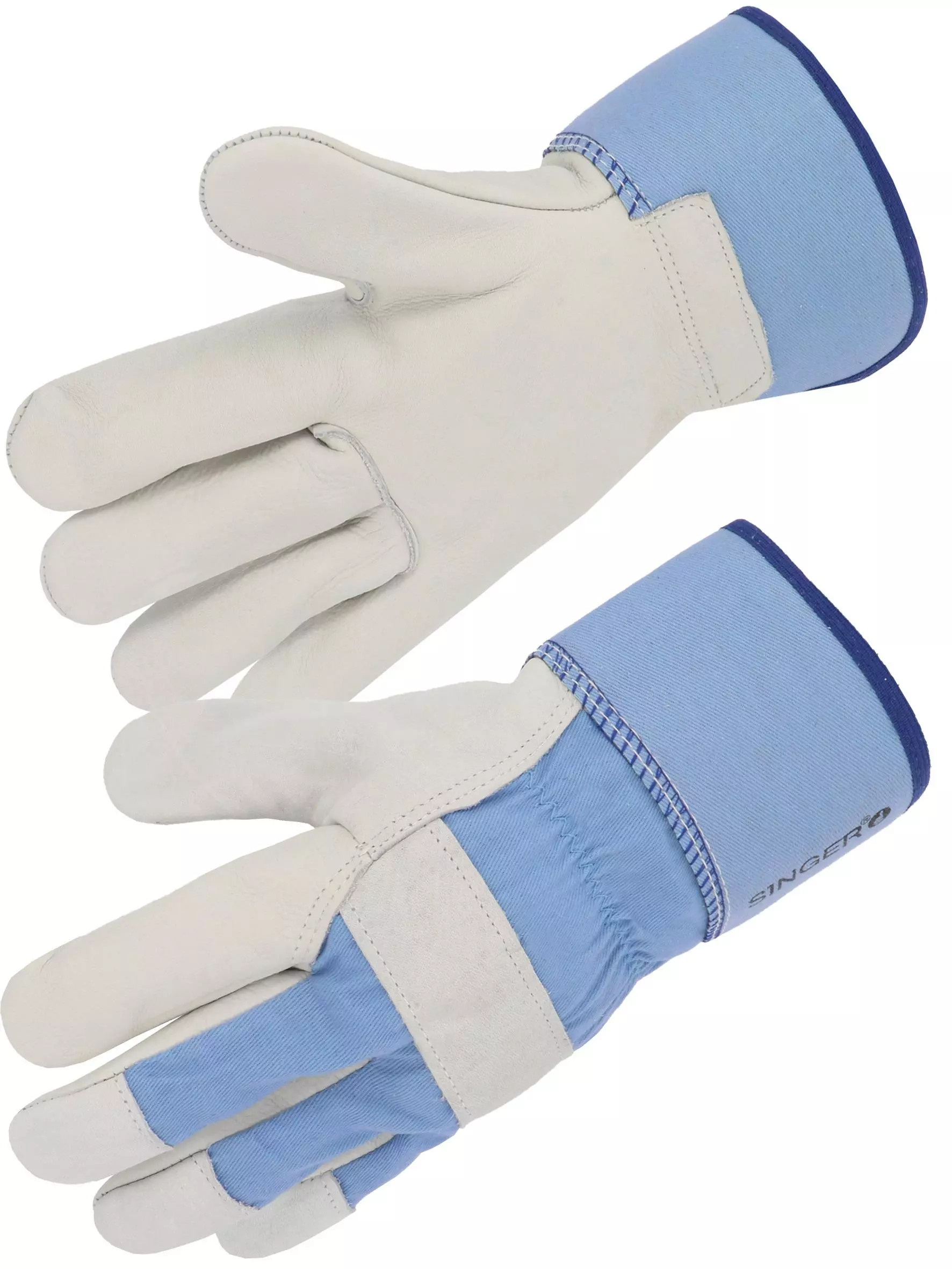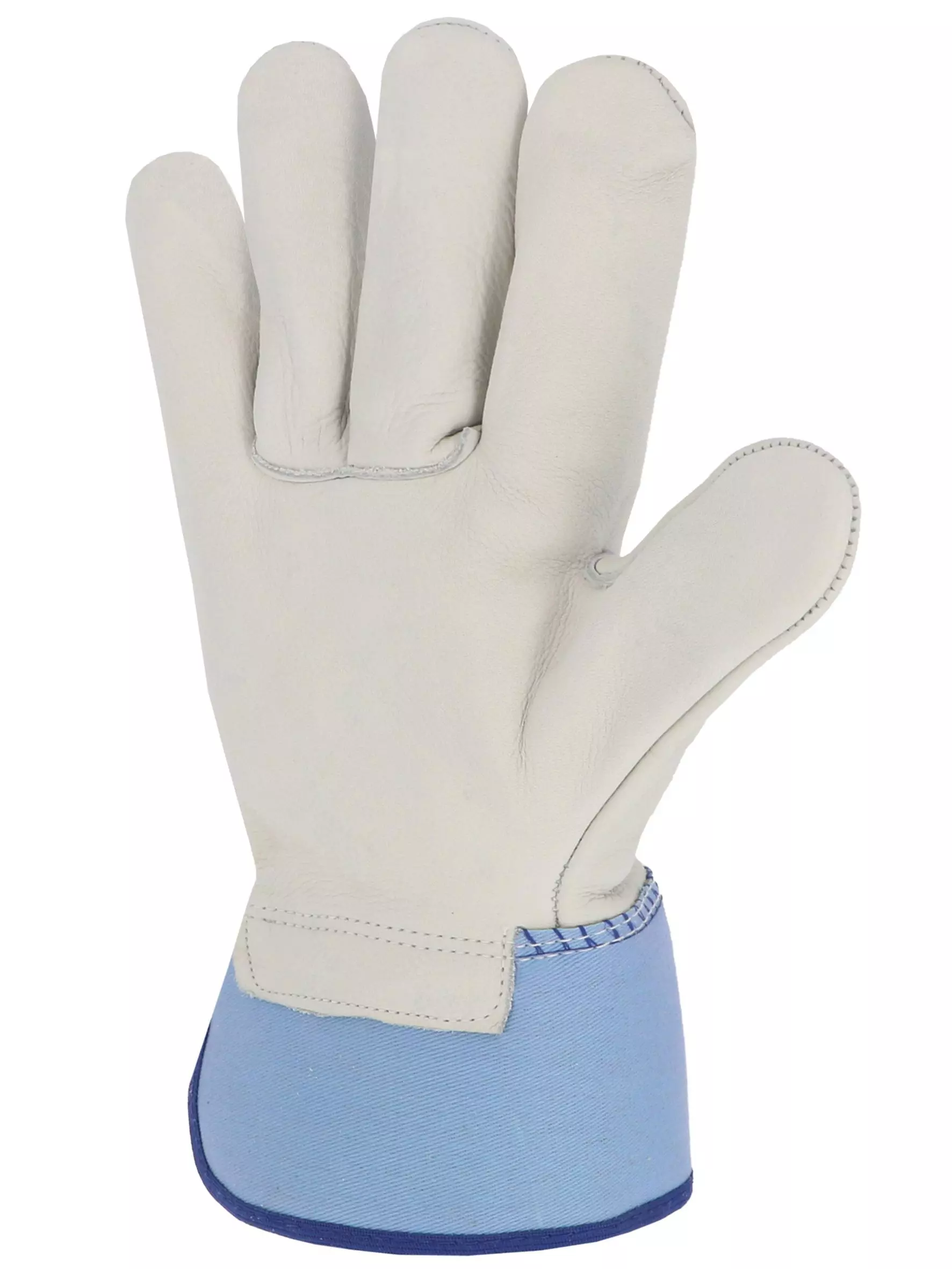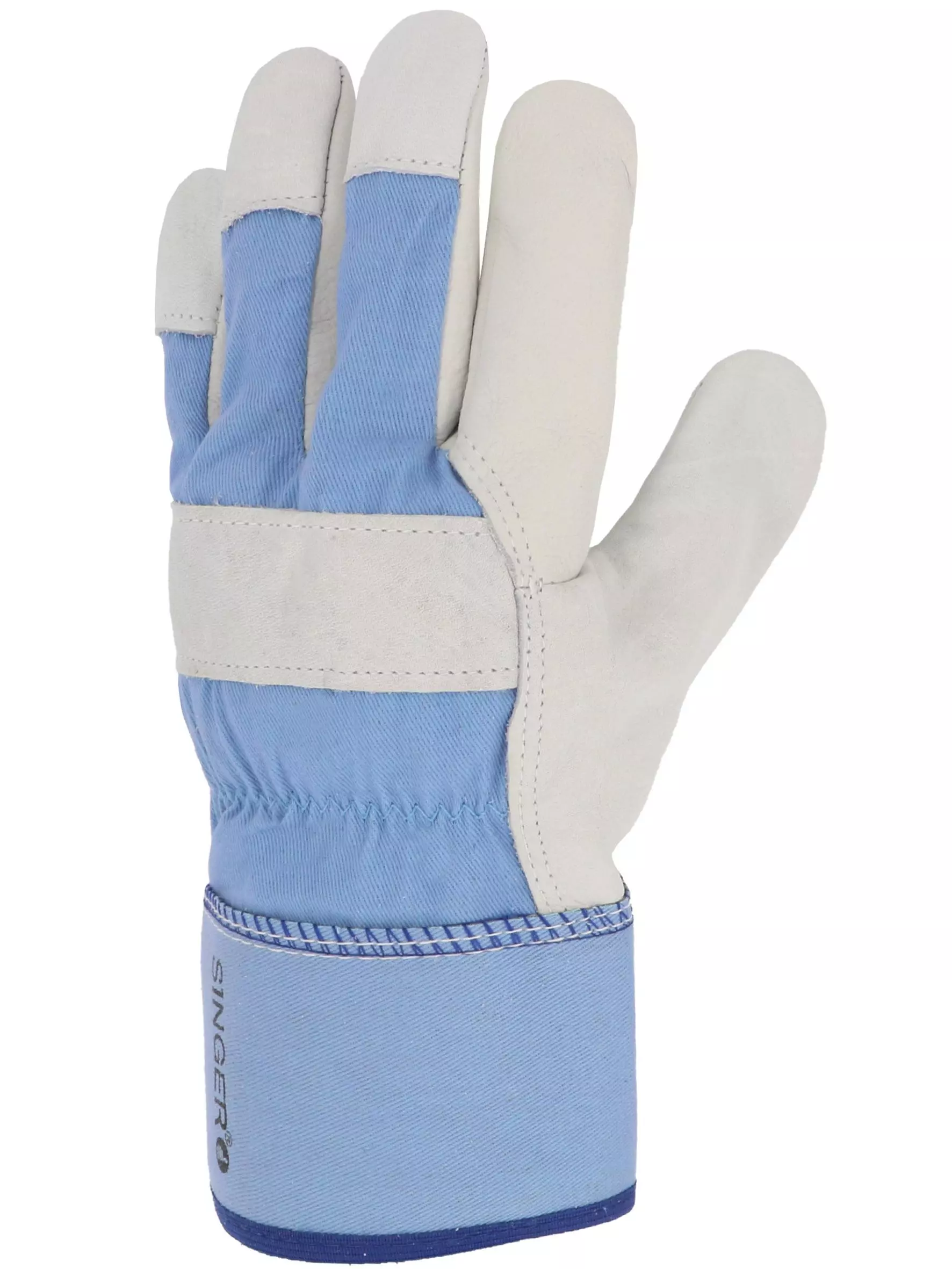


Singer Safety
Protective Gloves, 10 pairs
Protective Gloves, 10 pairs
4.7 / 5
30,80 €
Price per 10 pairs
3,08 € / pair
Choose size
Shipping fee is 7,95 € for orders under 80,00 €
Product description
These protective work gloves feature a durable cow grain leather palm with cotton lining for comfort and moisture absorption. Designed for heavy-duty applications, they incorporate a cotton canvas back with leather fingertips and knuckle patch reinforcement for extended durability. The Gunn cut pattern with wing thumb design provides excellent flexibility and resistance to wear in demanding work environments.
Product Features:
- Cow grain leather palm with cotton lining for comfort and sweat absorption
- Cotton canvas back with leather fingertips and knuckle reinforcement
- Gunn cut pattern with wing thumb for improved durability
- One-piece forefinger design for enhanced dexterity
- Middle and ring fingers sewn separately for better fit
- Shirred elastic back for secure positioning
- Rubberized cotton cuff with piping for wrist protection
Technical Details:
- EN ISO 21420:2020 certified for general protective glove requirements
- EN 388:2016+A1:2018 mechanical protection rating: 2121X
— Abrasion resistance: Level 2
— Cut resistance: Level 1
— Tear resistance: Level 2
— Puncture resistance: Level 1
- Category II PPE according to European Regulation (EU) 2016/425
- ISO 9001/ISO 14001 certified production
Recommended Applications:
- Public works and construction
- Building and maintenance
- Agriculture and farming
- Green spaces maintenance
- Transport and logistics
- Heavy work in dry environments
EAN: 3660514003743, 3660514003750